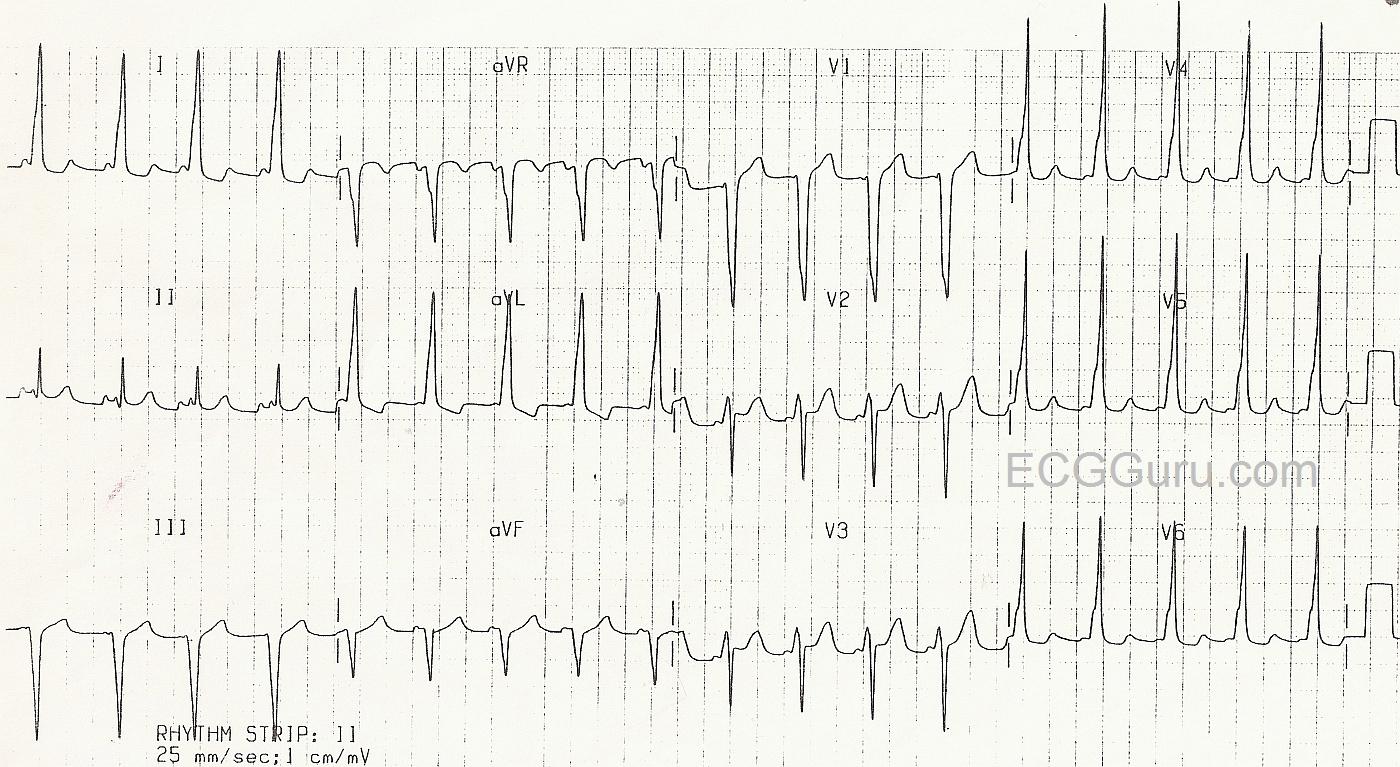WPW is one of the "pre-excitation" syndromes caused by an accessory pathway that bypasses the AV node. This pathway is called the Bundle of Kent. This ECG clearly demonstrates the "delta wave" caused by the atrial impulse traveling around the AV node and pre-exciting part of the ventricle. These delta waves are best seen in Leads I and V4 - V6. The delta wave in Lead II is a small notch. A short PR interval is also seen. The accessory pathway can, along with the normal pathway through the AV node, form a circle or circuit, making the heart vulnerable to re-entrant tachycardia. This ECG is from a four-year-old girl who had not been previously diagnosed.
All our content is FREE & COPYRIGHT FREE for non-commercial use
Please be courteous and leave any watermark or author attribution on content you reproduce.



Comments
Reprise
This ECG was originally published to the ECG of the WEEK bak in December, 2011. We felt that it was a good addition to this week's other content.
Dawn Altman, Admin
WPW in a 4yo - Localizing the Pathway ...
Nice example by Dawn that shows how even in a 4-year-old - WPW may be the "great mimic". This ECG superficially simulates LBBB, LVH - and possibly also inferior infarction (since delta waves are negative in leads III,aVF) - but the "telltale" delta waves in leads V4,V5,V6 give it away ...
Regarding Localization of the Accessory Pathway (AP) - this has always been (and continues to be) challenging for me. For the most part - this does not matter to the non-arrhythmia specialist - since management/decision of when to refer does not depend on where the AP is ...
Finally - with regard to the decision of WHO to Refer? - this link is of 2 pages I wrote-up on my web brain in 2011. It pretty much holds true in 2013 - with bottom line being that pediatric patients SHOULD be referred since an EP cardiologist may "cure" potential AP problems with a procedure. In contrast - the patient over 40 who is incidentally discovered to have WPW on ECG obtained for some other purpose (ie, NO symptoms! ) can probably be left alone and followed (as long as no symptoms from the WPW arise ... ).
Ken Grauer, MD www.kg-ekgpress.com [email protected]